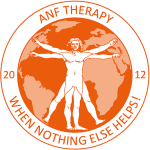Diseases that start with back pain
Several musculoskeletal diseases, inflammatory conditions, and infections can cause back pain as an early warning sign. If you have persistent or severe back pain, pay attention to the symptoms of the following conditions. This may help you identify a more serious underlying issue.
Ankylosing spondylitis
Ankylosing spondylitis is a type of arthritis that results in inflammation of the joints and ligaments in the spine. It can also affect peripheral joints, including the knees, ankles, and hips. This leads to stiffness and pain, especially in the lower back and hips. In more severe cases, the bones in the spine can fuse, making the spine rigid and less flexible.
Endometriosis
A condition where tissue similar to the lining inside the uterus grows outside it is known as endometriosis. This abnormal growth causes severe pelvic pain. Women may also experience pain during menstruation or sexual activity.
Fibromyalgia
Fibromyalgia often begins with localised back pain. This chronic condition causes widespread musculoskeletal pain. People may also experience fatigue and sleep disturbances. Stress and infections may trigger its onset.
Herniated disk
A herniated disk, which occurs when the soft centre of a spinal disk bulges out, also causes back pain that may radiate to the legs. It often results from injury, heavy lifting, or age-related wear.
Kidney infection (pyelonephritis)
Kidney infection is another cause of low back pain. It occurs when bacteria enter the urinary tract and cause inflammation. The condition is often accompanied by other symptoms like fever and bloody, foul-smelling urination.
Kidney stones
Kidney stones may cause pain as they move through the urinary tract. The pain also radiates to the lower back or abdomen. Risk factors include dehydration and certain diets.
Osteoarthritis
Osteoarthritis occurs due to joint degeneration. In this condition, the protective cartilage in the spine wears away, leading to stiffness and swelling. Back pain, especially in the lower back, is a common symptom of osteoarthritis.
Osteomyelitis
A bone infection causes osteomyelitis. In this condition, bacteria may enter through the bloodstream or nearby tissue. People experience symptoms, including back pain, fever, and localised tenderness.
Osteoporosis
This condition weakens bones, increasing fracture risk. It develops silently with age and hormonal changes. People with osteoporosis often experience low back pain due to minor vertebral fractures.
Sacroiliitis
In this condition, the sacroiliac joint becomes inflamed, causing pain. As one of the largest joints in the body, it is often associated with pain in the buttocks and lower back.

Sciatica
Compression of the sciatic nerve (which goes from the lower back to the legs) causes sciatica. It often occurs due to spinal stenosis or herniated disc. This condition usually starts with back pain, which radiates down the sciatic nerve to the legs. It can be sharp or burning and may be accompanied by weakness or numbness.
Scoliosis
Scoliosis can begin with back pain due to an abnormal spine curvature. This misalignment can lead to discomfort and postural issues. It is often diagnosed in childhood but can affect adults too.
Spinal cord tumour
Abnormal growths, benign or malignant, exert pressure on the spinal cord. Back pain may be among the first symptoms, often along with neurological symptoms like numbness or weakness.
Spinal fractures
Spinal fractures often start with sudden back pain. They can occur due to trauma, osteoporosis, or cancer. Severe cases may lead to nerve damage and require treatment.
Spinal stenosis
The condition involves narrowing the spinal canal, which puts pressure on the spinal cord. It usually develops gradually with age. It often begins with back pain that can radiate to the legs.
Spondylolisthesis
Spondylolisthesis is a condition in which one vertebra slips over another. This can lead to nerve compression and pain in the lower back. Spondylolisthesis may occur due to trauma or degenerative changes in the spine.
Cauda equina syndrome
It is a severe condition caused by compression of the cauda equina nerves at the base of the spinal column. It often begins with back pain followed by severe nerve symptoms. Pressure on the lower spinal nerves can also result in weakness and bladder dysfunction.
What is the Newest Treatment For Back Pain?
Management of back pain with ANF Therapy®️:
An ANF Orthopaedic practitioner will take your history regarding your back pain and do your physical examination to identify the underlying cause of your back pain. After this, they will make a personalised treatment protocol.
Applications of ANF Devices:
ANF Devices are applied to the affected area of your body. These Devices aim to normalise the weakened neurological frequencies in your body, reduce inflammation and oxidative stress, promote self-healing and strengthen your core muscles.
Expected outcome:
Most patients feel quick relief within 10-60 minutes after applying ANF Devices. The possible outcome of ANF Therapy®️ is a 50 per cent reduction in pain after the first session. The treatment outcome varies from person to person, depending on the underlying cause and severity of the disease.
Follow-up:
You will need to change ANF Devices after 72 hours. Your therapist will create a personalised treatment plan for you and educate you about these changes.
Regular follow-ups are essential in treating back pain and checking the efficacy of ANF Devices. Your ANF Therapist will guide you on the number of follow-up sessions and treatment duration.
Start your journey with ANF Therapy®️:
ANF Therapy®️ offers an innovative and the most effective treatment for managing back pain. This non-pharmacological therapy provides a safe and effective approach that improves disease outcomes by targeting the root cause. If you’re suffering from back pain, consult an ANF Practitioner or find an ANF Therapist to start your treatment with ANF Therapy®️ today!
If you’re a healthcare practitioner and want to enhance your clinical skills with frequency medicine, learn more about the ANF Therapy®️ and ANF Clinical education program by visiting www.anfacademy.com.








